Donana National Park and Sanlucar de Barrameda
![]()
The great Rio Guadalquivir flows past Cordoba and Sevilla and on toward the Atlantic, forming a vast estuary of lagoons, marshlands, fixed and moving dunes, pine and oak woodland and heath now protected as Donana National Park. Once a royal hunting preserve, this area is the most important wetland in Spain and one of the largest and best-known wetlands in Europe, because of its wide range of productive habitats. Over 60,000 acres have been protected so that it remains productive, inaccessible and well preserved. It is the last tract of relatively undisturbed marsh in the Guadalquivir delta, home to flamingoes, herons, imperial eagles and purple gallinules. The last Iberian Lynx roam the scrublands and thousands of migratory birds stop here each winter.
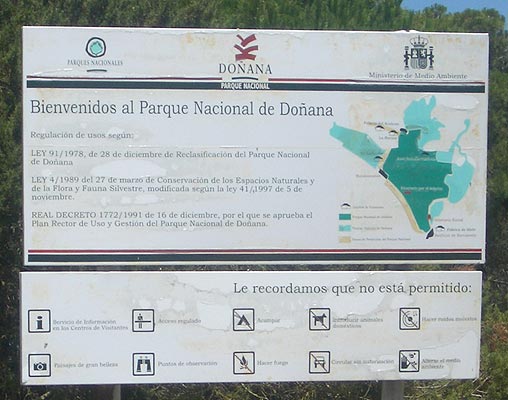
We had learned that a boat, the Real Fernando, takes visitors up the rio from Sanlucar to experience just a small sample of this vast and diverse wetland, so we decided to go there. From Sevilla, the bus ride took us south through the groves and fields of row crops and bright yellow sunflowers of the coastal plain for about two hours. We were surprised to find Sanlucar to be a town of 60,000, not the tiny village we had envisioned. With no map, we walked toward the centre and inquired at an office about the location of the Posada de la Palacio, our hotel. We found our way, through plazas, past the Mercado to the foot of a hill. We had been told the hotel was up this hill so we walked up, our wheely bags bumping over the coblestones to arrive at the entrance.
We checked in and stashed our stuff, then inquired at the desk about the boat ride into Donana National Park, the reason for coming here. We were directed to go to the visitor center to make reservations. So, back down the hill we walked, finding it easier going down and without bags, through the town centre to the beach to find the Fabrica de Hielo, an old ice factory now serving as the Donana Visitor Center (below left). Here we bought tickets for the next day's morning boat ride and looked at the displays about the history and ecology of the park as well as the wonderful views of the river and ocean (below right).
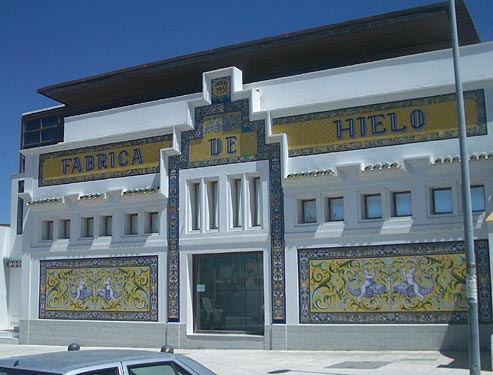
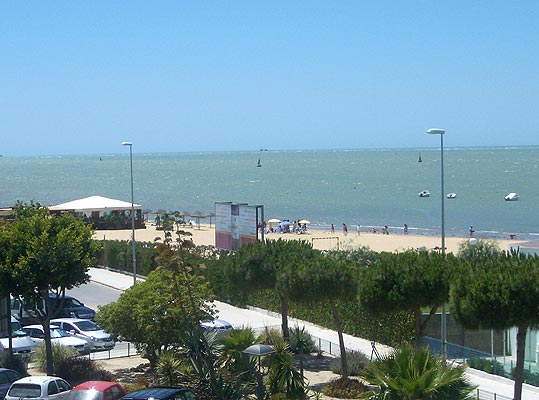
With this arranged, we focused on lunch. After stopping at a taberna for a snack, we spotted a supermercado and bought bread, cheese and sodas for a picnic. After a walk around the town, we watched as people gathered to shop, stroll or meet friends at the cafes along the plazas (below). We stopped at a cafe but discovered that the tapas were all shellfish and crustaceans so we settled for a glass of the local wine, Manzanilla. It was delicious! Winemaking and fishing are the major industries of Sanlucar.
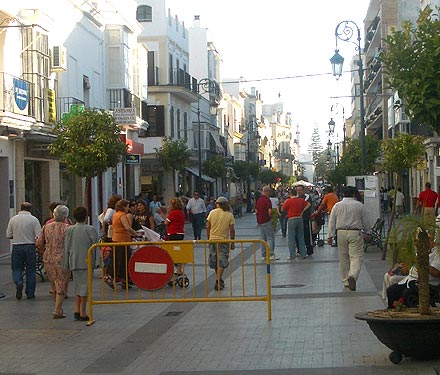
The next morning, we returned to the boat dock and boarded the Real Fernando (below left), waiting to leave. At the last moment, a large group of elderly Spanish tourists, mostly senoras, arrived. Now the boat was crowded and the level of noisy chatter had leaped quite a bit! Casting off, the boat chugged up river into the National Park. We passed dunes with pines, salt flats with salt grass and other vegetation, spotting herons, soaring kites (below right), and even a mama javalina with two young ones. This place reminded us of the Everglades, a vast open land of subtle beauty. There were two stops for walks, one to a salt flat where hundreds of flamingoes hang out and another to explore remains of a village where former residents had lived, producing honey, pinons and charcoal.
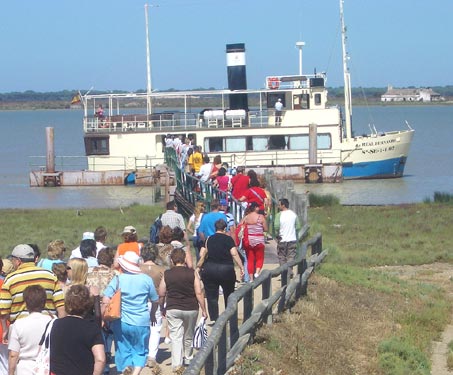
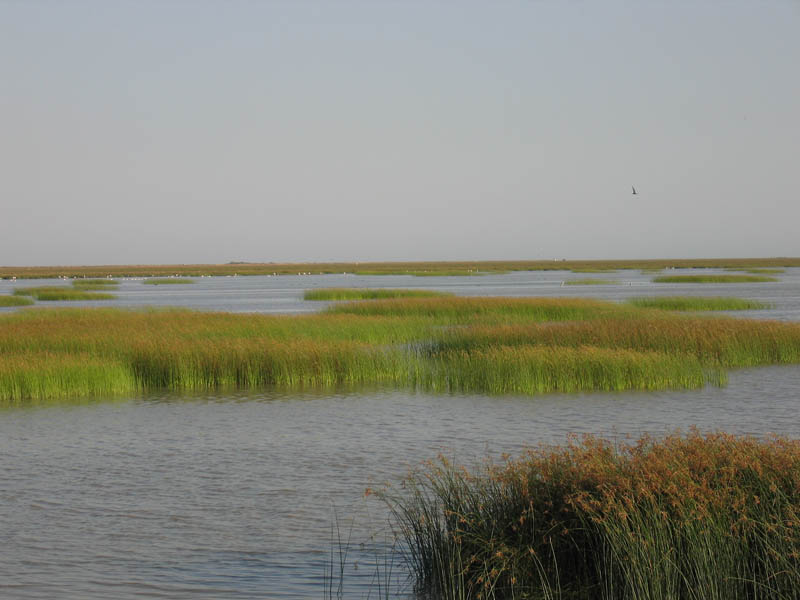
Back at the pier, we returned to the hotel, collected our bags, walked down to the bus estacion and caught a bus to Jerez, where we made a five minute connection onto a bus to Algeciras. We rode through scenic, mountainous country interspersed with olive groves and vines and finally into town. Our plan was to stay in Algeciras and take the bus to La Linea in the morning where we would then walk across to Gibraltar.
Click here to return to Our Travels in Europe - Summer of 2007 page
Click here to return to our Searching the World page
![]()